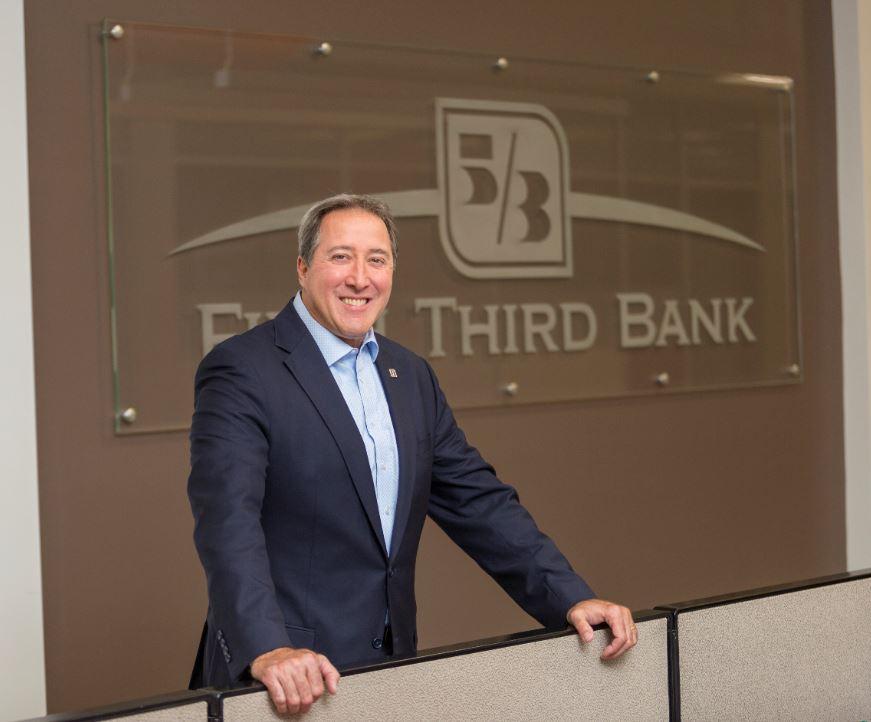From the Fifth Third 2021 TCFD Report: Letter from the Chairman & CEO
By Greg D. Carmichael, Chairman & CEO

The following letter was published in the Fifth Third Bancorp 2021 Task Force o…
In 2021, I was named Responsible CEO of the Year for Community Impact by 3BL Media. I note this not because it honors me personally, but because it acknowledges, in a very public way, the work that Fifth Third’s employees have done to improve the lives of all our stakeholders. We all depend upon a healthy environment to live our best lives, and that’s why we’ve made accelerating the transition to a sustainable future a key priority of our Company. We are committed to doing well by doing good. We have worked hard to become an industry leader in environmental sustainability since we launched our program and began our journey in 2011.
We believe it is important to our stakeholders to provide transparency along our journey. We have published sustainability reports for nearly two decades, first as community investment reports, then corporate social responsibility reports and now Environmental, Social, and Governance (ESG) Reports. We began reporting progress on our climate journey in 2010 by adding a section in our Corporate Social Responsibility (CSR) report and responding to the Carbon Disclosure Project (CDP) climate change questionnaire. I am proud that we were again recognized as a leader by CDP in the 2021 survey for the third consecutive year, as well as other ESG data providers.
Along the way, we achieved many “firsts,” such as being the first regional bank to publish a Task Force on Climate-related Financial Disclosures (TCFD) Report in 2019; to achieve 100% renewable power use through a single, solar project, also in 2019; and becoming the first regional bank to achieve carbon neutrality for its own operations in 2020. Just a few months ago, in November 2021, Fifth Third settled the issuance of its inaugural Green Bond for $500 million. The proceeds will fund green projects that align with the Bank’s sustainability priorities as outlined in our Sustainable Bond Framework. With the issuance, Fifth Third became the first U.S. financial institution with under $250 billion in assets to issue an ESG bond of any type. The bond also enabled us to align our financing with our investment and lending priorities, providing liquidity to our customers as they transition to a sustainable future, and to provide additional options to help our investors achieve their goals.
We recognize that climate change is bigger than us, as individuals or a company. The financial sector plays an important role in making necessary changes to adapt to a changing planet and create more resilient communities. Through our membership in the Partnership for Carbon Accounting Financials (PCAF), we are committed to assessing and disclosing client greenhouse gas emissions associated with loans and investments. We also are partnering with the Ceres Company Network to help guide our climate strategy. We describe in this report how our lending and investment businesses are growing to support the transition to renewables and a low carbon economy. Additionally, we are being vigilant for physical risk, such as flood zone-mapping changes and increased extreme weather events. We are committed to understanding how these changes could materialize over time and impact our customers and portfolios.
We also appointed our first climate risk officer to lead our climate risk team and ensure that climate-related risks are top of mind in every division—and every decision—as our Bank works to serve our customers. The team is actively integrating climate risk into our Risk Management Framework and planning for scenarios that reflect climate change. This will, in turn, allow us to establish conversation points to guide our lines of business in discussions with our customers, and enable the Bank to develop a net-zero aligned strategy not only to manage risk but also to continue transparency around the Bank’s emissions across our portfolios. I expect that you will see actions in the future that address how we are thinking about climate change in every aspect of our business.
Although the banking industry is still in various stages of the climate risk strategy and management journey, our Bank begins with a solid legacy of environmental sustainability leadership and a strong foundation for risk management and governance. Combined, this places us in an ideal position to be leaders for change for both the short and long term. Thank you for your interest in our second TCFD Report and our work to help communities navigate climate-related risks and opportunities.

